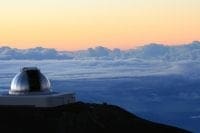Mauna Kea is an inactive volcano on the Big Island, one of five volcanoes which together form the island of Hawaii. Mauna kea means “white mountain” in the Hawaiian language, a reference to its summit being regularly covered by snow in winter.
The peak of Mauna Kea is 13,796 feet (4,205 m) above mean sea level but 33,476 feet (10,203 m) above its base on the floor of the Pacific Ocean. It is the world’s tallest mountain by this measure, taller than Mount Everest, which is the highest mountain above sea level.
Pu’u Wekiu, traditionally known as Pu’u o Kukahau’ula, is the highest of the numerous cinder cones on the summit plateau. It is also the highest point in the state. Mauna Kea can be reached via the Saddle Road from Hilo. A trip here is a must do!
The summit of Mauna Kea has been a celestial observatory since ancient times and is considered to be one of the best astronomical sites in the world. For this reason it is home to many of the world’s leading astronomical observatories. The summit is above approximately 40% of Earth’s atmosphere and 90% of the water vapor, allowing for exceptionally clear images of the night sky. Additionally, the peak is well above the inversion layer, which leads to approximately 300 clear nights per year. Also, at 20 degrees N latitude, all of the northern sky and most of the southern sky is visible. The fact that it is a shield volcano has meant that road transportation to the summit is relatively easy. The low population density of the Island of Hawaii means that there is little light pollution from man-made sources. All of these factors have made Mauna Kea an ideal location for state-of-the-art astronomy.
Getting Here:
Take HWY 11 or 19 to Downtown Hilo. Turn onto Waianuenue and continue onto Kaumana Drive. Kaumana will merge with Saddle Road. Continue on Saddle Road until you see Mauna Kea Access Road on the Right. Turn right and continue to the visitor’s center.

